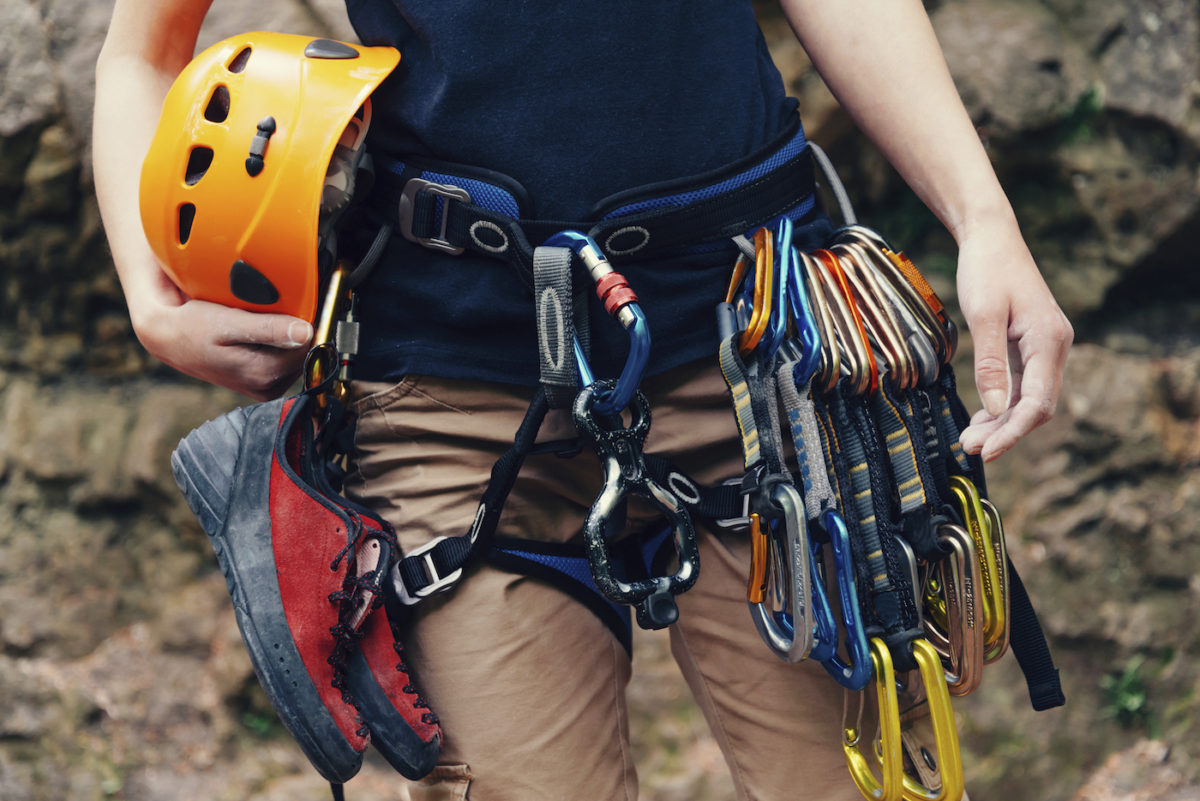Growing helmets are Made to protect you against Many common climbing Situations; for Instance, when:
- Stones or Components get kicked loose over you
- you peel off and Creep to a wall
- you hit your head in an overhang
Getting the Correct helmet entails three Major factors:
- Helmet kind
- Sort of scaling you do
- Getting the Ideal match
Growing Helmet Sort
Growing helmets come in two chief types. Helmet manufacturers use various terms for every kind of helmet, so concentrate instead on telltale structure details such as shell hardness, foam depth and amount of ports.
This sort of durable, conventional lid includes an extra-hard outer shell, usually ABS plastic, that is paired with a strap suspension system along with a thin foam lining. Other conditions for these helmets are suspension hybrids and hybrids. This Sort of helmet provides two main benefits:
This lightweight design includes a thick coating of impact-absorbing polystyrene or polypropylene foam shielded by a thin rubberized casing. This Sort of helmet provides two main benefits:
Mountaineering and multi-pitch trad climbing: If you are hauling plenty of gear and sporting a helmet for lengthy intervals, very low weight and ample venting are significant.
Additionally, select a bright helmet colour for mountaineering. Whiteout conditions are always an opportunity and you need your team members to have the ability to identify you.
Ice scaling: since you are going to be exposed to lots of falling debris, then start looking for a shelled-foam version with nominal venting area. You do not need much heating, or need a great deal of openings to allow in anything may rain down on you.
Warm-weather game climbing: Look in shelled foam versions with the best variety of vents.
Cool-weather and single-pitch game scaling: since you may take the helmet off while awaiting your turn to scale or belay, you may opt to exchange the relaxation of a shelled foam version to the durability and worth of a hardshell.
Belaying: Protection from rockfall and dropped equipment is an issue, therefore it is crucial that you also wear a helmet whilst belaying. No exceptional helmet is demanded: Just wear the lid you attracted for scaling.
Indoor scaling: Fitness principles and liability waivers will dictate if or not a helmet is required. Since rockfall is not a concern, however, a trendy, lightweight shelled foam helmet would be your sensible choice if you’re expected to wear one.
Virtually all helmets possess headlamp clips today, so it is less of a thought. If you intend on long climbs with predawn begins or post-sundown finishes, these clips are crucial.
Even if friends or reviewers indicate that one helmet would be the best, it will not be perfect for you if it does not fit properly. If you can not get a great match with your preferred helmet, then you want to try another version. The very best approach to estimate healthy would be to test on various helmets at a climbing specialty shop.
Check for a secure fit: Start by putting the helmet squarely in your mind, together with the front rim directly across your brow. Once you correct the match, but until you buckle the chin strap, then shake your head from side to side and tilt your head slightly back. The helmet should stay comfy.
Assess and fix chin straps: as soon as they’re buckled you should not have any slack and front and back straps should form a”Y” around every one of your ears.
Assess the simplicity of modification: Play together with the adjustment method to realize how intuitive you locate it and how simple it’s to fine-tune the match. Benefits of adjustability is crucial for chilly conditions since you want to readjust match to adapt a skullcap beneath the helmet.
Retire any helmet that is dented, cracked or ruined –such as the straps. In the absence of observable harm, retire after every episode in which you think about yourself,”I’d have been severely messed up for my helmet.”
Do these tests prior to every climbing excursion:
- Is your outer shell absolutely free of any noticeable harm? Minor dings are OK; significant dents aren’t.
- Will Be the buckle along with other hardware in good working order?
- Is your webbing in great shape and free of frays and tears?
- Is your foam casing protected within the helmet’s shell?
If the reply to any one of these questions is”no,” then receive a helmet. Additionally, you ought to stow your helmet within a climbing bag to protect it from draining from hard surfaces, making it susceptible to chipping and breaking.
Even if it’s never affected, retire a helmet over a decade. Sunlight’s UV rays slowly deteriorate substances, so in case you grow frequently, reduce this lifespan period .

